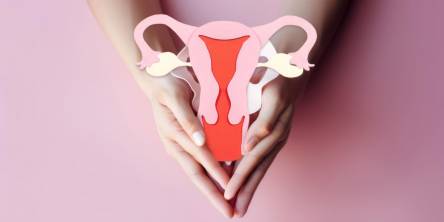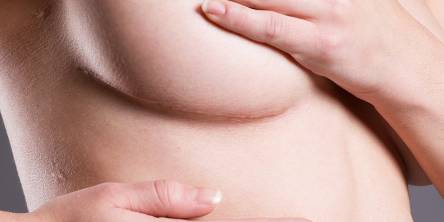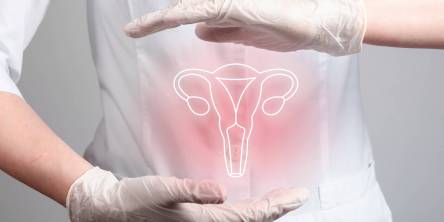5 Facts You Should Know Before Having a Breast Lift Surgery

Breast lift surgery lifts the breasts, strengthens the tissue, and eliminates extra skin to boost elevation and better nipple positioning.
You should be aware that a breast lift is not the same as a breast augmentation operation; the differences lie in the outcomes obtained from each technique independently. You may want to combine a breast lift with a breast augmentation to achieve the greatest aesthetic effects. The goal of performing breast lift surgery is to improve the overall appearance and rejuvenation of the breasts by correcting the nipple position and lifting it to an aesthetic height.
Breast lift surgery is frequently requested in conjunction with breast augmentation by celebrity clientele, resulting in increased demand for the treatment in recent years.
The procedure is used to alter the shape of the breasts and give them an attractive appearance. It involves removing excess skin and reshaping breast tissue to elevate the breasts. It is also known as mastopexy, and it is an important aspect of mommy makeover surgery, particularly when combined with breast implants, depending on the patient's specific needs and realistic expectations.
The top five most significant facts about breast lift surgery to know before undergoing the treatment are as follows:
1. A breast lift is different than a breast augmentation.
Though both operations are intended to improve the visual appearance of the breasts, they are particularly sought after for breast contouring issues. The breast lift enhances the look by correcting the nipple position, treating drooping breasts, and lifting the entire breast to a more youthful position. On the other hand, breast augmentation uses implants to increase breast volume. It is important to understand that a breast lift will not change the size of your breasts, but it will improve their overall appearance by correcting the nipple and areola position and resolving the breast asymmetry issue.
2. A breast lift can also accompany a breast augmentation surgery.
A breast lift and augmentation might be combined to achieve the desired result. However, most women choose a combination of breast lift and augmentation, frequently as part of a mommy makeover, to improve breast shape and restore fullness in the upper area of the breasts. A one-way breast lift enhances the nipple and areola position, which points downward, and asymmetric breasts suggest that one of your breasts is lower than the other or has a different size, volume, position, or form. Breast augmentation, on the other hand, enhances fullness and size while also addressing the issue of gapping between the breasts.
3. You might have drains.
It could be the case, but most experienced plastic surgeons do not utilize drains. Drains are infrequently used by surgeons during breast lifts and augmentations. So you don't have to worry about post-operative drainage issues.
4. You will maintain the ability to breastfeed.
A breast lift procedure eliminates extra skin and sagging tissue, and it may also damage glandular tissue. As a result, it is recommended that you contemplate breast lift surgery after you have had children, because the procedure may disrupt the milk ducts. Although breastfeeding is normally viable following a breast lift, some women may experience difficulty producing enough milk. So, it would be beneficial if you addressed your concerns and options with your plastic surgeon before the treatment.
5. You will return home the same day.
A breast lift surgery is an outpatient operation, which means you won't have to stay in the hospital overnight. However, if your plastic surgeon has given you the go-ahead, you can leave the hospital the same day. A breast lift is typically performed under sedation or local anesthetic. General anesthesia may be utilized in some circumstances, depending on the severity of the condition. The surgery usually takes one to three hours, and the patient is discharged home.
Similar Articles
If you have hip discomfort during perimenopause or beyond menopause, there may be a relationship. Reduced estrogen levels might raise your chance of getting gluteal tendinopathy. They may also contribute to osteoarthritis, which can damage several joints, including the hips.
Of the estimated total population having osteoporosis and osteoarthritis, 80% are women. One in two women over the age of 50 get serious fractures because of onset or severe osteoporosis. A bone injury at that age means serious length of recovery and difficulty in returning to normal mobility.
An enlarged vagina can occur as a result of unrelated events, such as the end of pregnancy or after sex. It can also be caused by vaginal irritation from wearing synthetic fabric underwear or a sexually transmitted disease such as genital herpes.
Uterine fibroids are one of the most common gynecological diseases that affect many women during their reproductive years. In this article, we will look at all aspects of this condition, including its causes, symptoms, diagnosis, treatment, and possible complications.
Polycystic ovarian disease (PCOD) is a hormonal disorder prevalent among women of reproductive age. It occurs when a woman's ovaries or adrenal glands produce higher-than-normal levels of male hormones, called androgens. This hormonal imbalance disrupts the menstrual cycle and leads to the formation of small cysts on the ovaries
Uterine fibroids are benign tumors that develop in the uterine muscle tissue. According to the US Office on Women's Health (OWH), fibroids can grow as a single tumor or as a cluster in the uterus, and they can be as small as an apple seed or as large as a grapefruit.
Your pregnancy test came back positive, and nothing, not even early pregnancy symptoms like morning sickness or exhaustion, can dampen your spirits. However, it is natural to worry about what to do when you discover you are pregnant.
A breast lift, like any other operation, involves skin incisions. Scarring occurs when your skin generates new tissues and mends the wound after an incision. There are, however, measures to reduce scarring before, during, and after a breast lift.
The cervix's proper functioning is crucial to a woman's reproductive health and fertility. However, most women do not know anything or have a limited understanding of it. As a result, there are numerous misconceptions surrounding cervical health.









